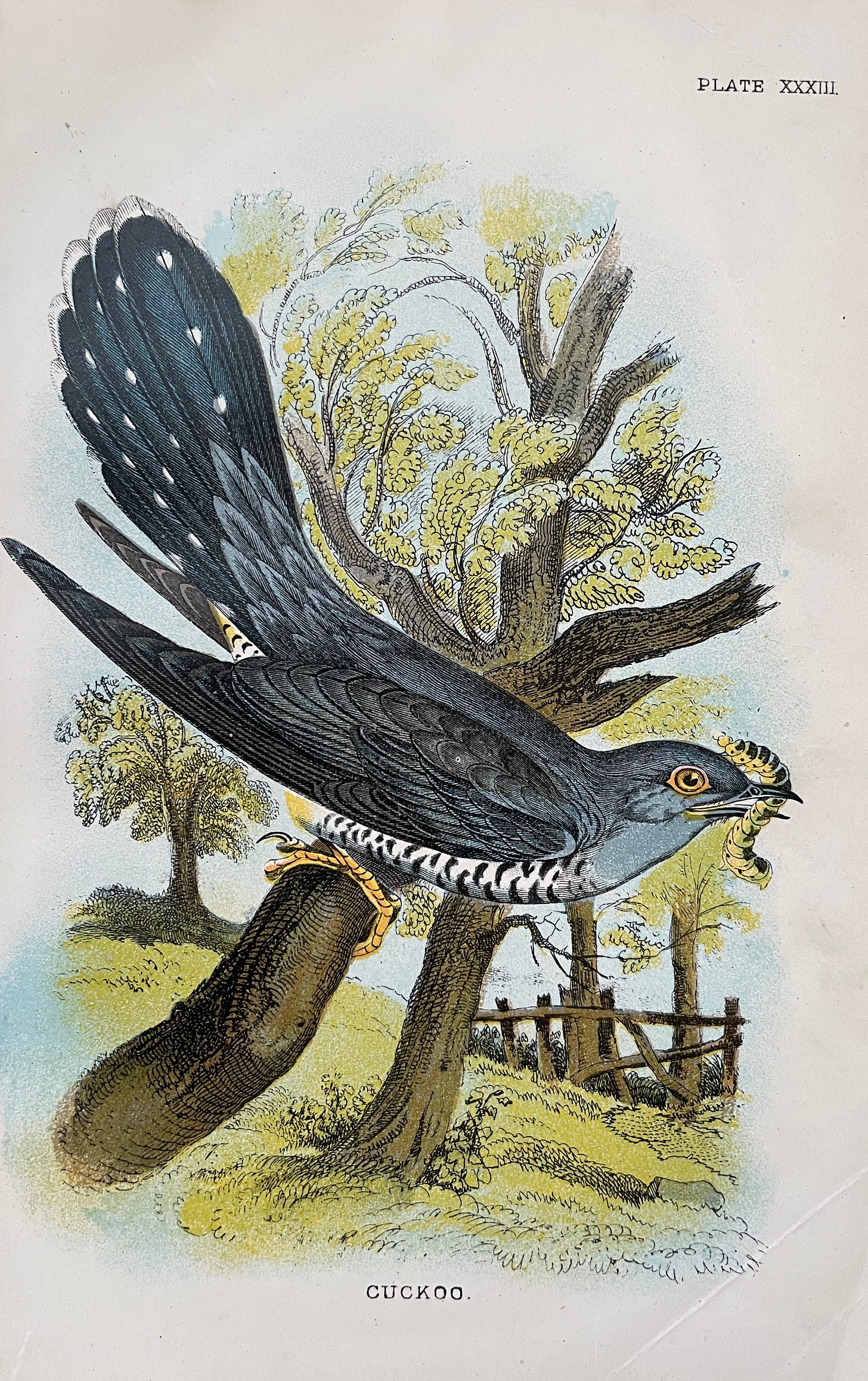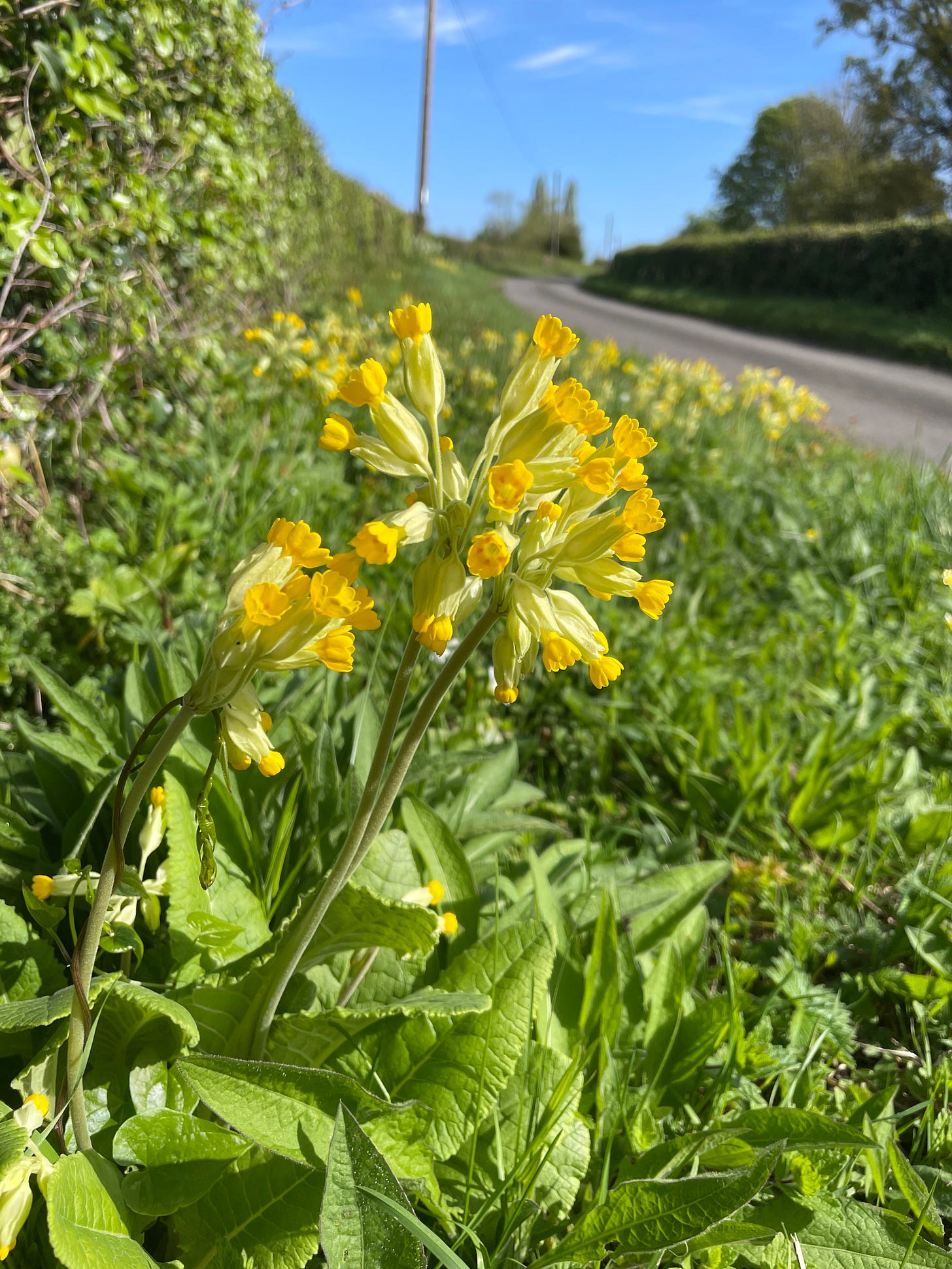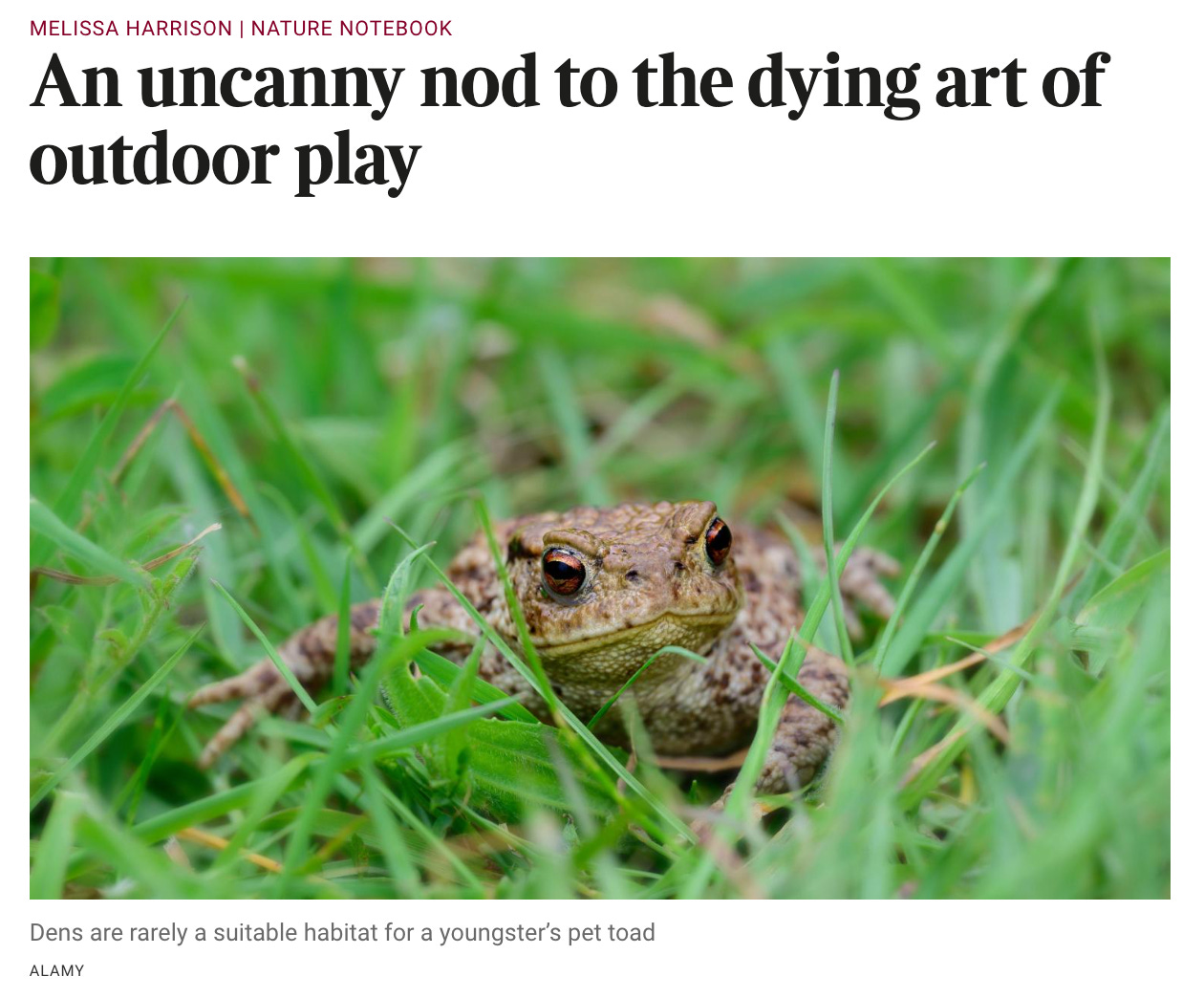The globe's still working
The pleasure and heartbreak of spring; why I don't know when or where I am; and what book reviewing has taught me about bad writing
Oh, April: here you are again, at last. I feel so grateful for spring this year, after such a long, wet winter. Welcome, dandelions; welcome honesty and hawthorn blossom and tulips reaching too high and flopping over in pots. Welcome forget-me-nots and orange-tips and noisy, rowdy sparrows; welcome swallows – oh, welcome! – and choirs of liquid-singing nightingales; welcome cuckoo-pint and cuckoo flowers and any day now, I hope, our village cuckoo himself. The sheer joy of it all revealing itself again for another performance, each one magical, each different from the last.
I wasn’t always oriented to the year’s cycle like this. In my teens and twenties I didn’t turn to the seasons like a great, wild clock, didn’t use it to tell time by, seeking out returning chiffchaffs like glancing at a watch. I don’t think I was unusual in that at all, but looking back now, it seems a thin kind of life to be living, only checking the weather so I’d know what to wear, believing sun was always good and rain was bad, letting the great unfolding pageant fall out of my conscious attention until it was no more than a roughly painted backdrop to my all-consuming social life. I’m glad it changed for me – glad I changed.
Middle age brings with it a growing awareness of mortality, a knowledge which we can try to refuse, as a toddler refuses medicine, or which we can work to incorporate in the understanding that change is inevitable, and that growth brings gifts. Now, each season feels precious to me because I understand that I will not be allowed to experience them indefinitely, and so I pay attention to them much more closely than I did when I still believed at some level that I would cheat death. At 49 I feel rooted in nature and the seasons in a way that feels right on a cellular level – and in evolutionary terms, it probably is.
Of course, the price to be paid for this kind of attunement to time and the seasons is an awareness of loss: my own, and those we’re inflicting on nature. It’s a price I’m happy to pay, though: it’s natural to mourn the things that now lie behind us, from perfect health and time enough to squander, to the natural abundance previous generations took for granted, and which we now find hard to imagine. Not to grieve for loss is grotesque, surely. It’s part of what it means to be alive in this world.
Yet sometimes I feel as though I lean on the year’s cycle like someone holding a bannister as they come down the stairs. Without the seasons’ metronome I don’t understand time well; even with them, it doesn’t always seem to flow at a rate I can believe in, or understand. I don’t have growing children to measure time’s passage by, and my year isn’t divided up by school holidays or family rituals. I don’t have many memories of my own childhood and those I do have feel provisional, unmoored, possibly even imagined; it’s as though the road behind me is largely obscured by mist, which makes it hard to tell how far I’ve come. As the youngest child of six, habituated to the feeling that I would never grow big enough to catch up to the others, and now someone still assumed by strangers to be younger than I am, my internal sense of how far along in life I am isn’t really that firm; in some ways I’m grateful for perimenopause, which has at least provided an unarguable milestone. Add to this the fact that 49 in 2024 is somehow younger than 49 was in 1980 (probably the earliest I can firmly remember grown-ups) – let alone 49 in 1950 – and it’s anyone’s guess what age I am. I know I’m not alone in having this feeling, and in fact, as we come to understand more about the differences between our brains, we’re discovering that some people do have a firmer grasp of the passage of time than others do.
I’m unmoored geographically as well as temporally, too. A few years ago I was diagnosed with something called developmental topographical disorientation: in simple terms, my brain can’t form cognitive maps, so I have no sense of where anything is beyond what I can see. I hesitate to use the term neurodivergence because I don’t want to take attention away from other forms of difference that may be more challenging to live with and which we are only just starting to make space and time for. In any case, I think (and hope) we’re moving away from the idea that there is a neurotypical brain from which some people diverge, and towards an understanding that many – perhaps all – abilities sit on a spectrum and that each brain has strengths and weaknesses which can be celebrated and compensated for. Certainly, navigational skills exist on a scale: some people have what’s called ‘a good sense of direction’ while others struggle. At the most profoundly affected end of the spectrum are the 2% of the population with DTD.
There’s a longer piece I might write one day about the many ways in which feeling lost and uncertain about your surroundings can shape a person’s life – some of which are relatively superficial and can be masked, and others which run incredibly deep. Certainly it’s fed into my writing, which is driven by a need to anchor myself in and deeply understand a place, to be able to hold it in mind in a way that in real life I can’t. It’s why I walk the same paths around my home again and again, repeatedly, obsessively: beating the village bounds, trying to anchor myself in these visually familiar but mentally indeterminate acres, pinning memory in place with the experiences I have. I want to be able to find my way to the dense thicket the nightingale always sings from, I want to know where on the riverbank the otter spraints; I need to be able to walk to the field the skylarks nest in, and find where the cowslips bloom. Each walk I go on is my own, personal rogationtide.
In spring this sense of reorientation is particularly strong: the summer birds return and their territories and nesting places are established, wildflowers bloom in their usual spots (or fail to) and leaves and blossom reappear on the same trees, although each year to varying degrees. I want to count everything in, like taking a register: I want to know that everything has happened when it should have, and everyone is back where they’re supposed to be, so I can orientate myself in time and place again.
But there’s more to it, of course, these days. Swifts overhead told Ted Hughes that ‘the globe’s still working’, and that sense of wanting the reassurance of ancient rhythms becomes more acute with every year in which I grow older and the pressures on nature build. But I will not cheat death, and the world will not escape the dangers we have set in motion, which we must witness and one day, grieve. Until then, part of the joy I feel on hearing my local nightingales is relief.
News
I’m so close to being able to tell you about the book I have coming out in November. We have a title and a cover now and everything! It’s non-fiction, and fully illustrated – the first illustrated book I’ve ever published. I feel really passionate about this one, and I hope I can tell you all about it in next month’s issue of Witness Marks.
Last month my Nature Notebook in The Times was about finding unplayed-in dens in the woods and what that means for children’s childhoods; about the rotting-70s-car-seat texture of a humongous giant puffball, and the mysterious tiny stars Robert Yaxley found when he looked at some bark at 50x magnification. It also featured a lovely picture of a toad, at my editor’s request, something that necessitated one of my favourite captions ever to have been written for a piece of mine:
I’ve been sent a couple of hardbacks of the French edition of my children’s book, By Ash, Oak and Thorn, which features an incredibly charming cover. Isn’t it lovely? Please admire my tulips, too. Those ones are called Poco Loco and are very long-stemmed, and although I’m not generally a pink person, I adore them.
And now, a little bit of Encounter news, if you’ll allow me: we’ve shown a video of our prototype app to our volunteer testers, who have been utterly brilliant at engaging with it and telling us what they think. We’ve had some really good insights and feel confident that we’re on track, once we make a few tweaks. Next up, we need to design it so that it looks all shiny and proper – and then comes the small matter of building the thing! If you’d like to sign up to receive occasional updates, click here.
The novel I’ve been rewriting has been handed in (both to my agent and to my friend Paraic, who will be very honest about it) so while I’m awaiting notes for the inevitable third version, I’ve decided to go back to book reviewing – and this has reminded me of a key weakness for some writers, and a real pet hate for me. In the next part of the newsletter I’ll be explaining what this issue is, how much of a problem it can be in a book (huge) and how to avoid it. It’s a flaw that exists at both the micro and macro level, and as such needs to be addressed at both the craft and the ‘whole writer’ end.
If you’ve enjoyed this edition of Witness Marks, please consider sharing it on Substack via Notes, posting it on your socials, or forwarding the email. And as always, thank you so much for subscribing. You are all, without exception, brill.
Keep reading with a 7-day free trial
Subscribe to Witness Marks by Melissa Harrison to keep reading this post and get 7 days of free access to the full post archives.







